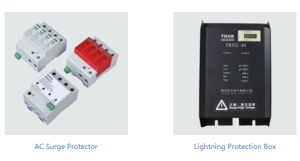The modern household is a dynamic network of gadgets, large and small, all requiring their lifeline - electricity. This demand for power often converges on a single, accessible tool: the surge protector. Understanding how many devices you can safely plug into a surge protector is not just a question of convenience but also a critical aspect of home safety and effective lightning protection.
Surge protectors are integral to safeguarding electronics from voltage spikes, offering a shield against excess electrical currents. They serve as a crucial element within broader lightning protection systems, preventing damage to appliances from electrical events. Yet, the protection offered by these devices isn't absolute; it has its constraints, and one of the primary ways homeowners unknowingly jeopardize this safeguard is by plugging in too many devices.
The key to determining the appropriate number of devices is understanding the surge protector's capacity and the power demand of your devices. Every surge protector comes with a specific energy rating, usually provided in joules, and a maximum current rating, indicated in amperes (A). These ratings signify the device's ability to absorb a power surge and the maximum current that can safely pass through it, respectively.
To navigate this, one must calculate the total energy consumption – in watts – of the devices they intend to plug in. This can typically be found on the devices' labels or in product manuals. Adding up the wattage of all devices gives you the collective energy draw. Most importantly, this total should not exceed the surge protector’s capacity. Overburdening the surge protector can lead to its failure, rendering the lightning protection ineffective and potentially causing electrical fires.

Another factor rarely considered is the nature of the devices in use. Appliances with compressors or motors, like refrigerators or air conditioners, have higher power needs upon start-up. Plugging such appliances into a surge protector with several other devices can unexpectedly overload the unit.
Experts often suggest that if a surge protector has ten outlets, that doesn't translate to utilizing all ten at once, especially for high-powered devices. A practical approach is limiting usage to around 80% of the surge protector’s capacity to provide a safety buffer.
Regularly monitoring the surge protector for signs of wear and heat ensures it's in good working condition. Investing in high-quality, certified surge protectors, and not “daisy-chaining” them (plugging one into another) also enhance safety. Part of responsible usage is recognizing when they need replacement. Most are not designed to last forever; following the manufacturer's guidelines for replacement is prudent.
Ultimately, respecting the limitations of surge protectors ensures their effectiveness in lightning protection. This mindfulness, combined with informed practicality, can prolong the life of your electrical devices and secure your household from the risks associated with electrical surges. Thus, maintaining a balance in how many devices you plug into a surge protector is crucial in sustaining a safe and functional living environment.